Chris Allen
Publix’s journey to stand-alone microsites
About
Publix, a beloved grocery chain in the Southeastern U.S., needed a way to support their growing number of stand-alone microsites. Each new marketing campaign or initiative required speed, consistency, and a strong brand presence. But their existing approach wasn’t scalable often resulting in teams reinventing the wheel each time.
The key challenge became clear:
How might we create a scalable system that allows Publix to launch microsites quickly, maintain a consistent brand voice, and adapt to evolving marketing needs?
As part of the design team at Fueled, I stepped in to lead alignment across design, engineering, and marketing teams. My focus was on reducing ambiguity, defining a clear process, and building a flexible design system that could evolve with Publix’s ambitions.
Challenges
The biggest challenge was aligning two design groups. Publix’s internal team and ours at Fueled around a single way of working. Without shared language, clear ownership, and decision rights, the risk was that projects may be lost in their purpose and not be adopted universally.
At the same time, the solution had to be scalable. This wasn’t about creating one microsite; it was about designing a system flexible enough to handle varied campaigns, content types, and brand extensions while maintaining a consistent Publix identity.
Approach
Align the teams & ways of working
I kicked off a series of discovery workshops to define goals, success metrics, roles, and ceremonies. We codified how we collaborate (who reviews, who approves, what a “done” design looks like) so both orgs could move as one. This included mapping stakeholder touchpoints across design, content, and marketing.
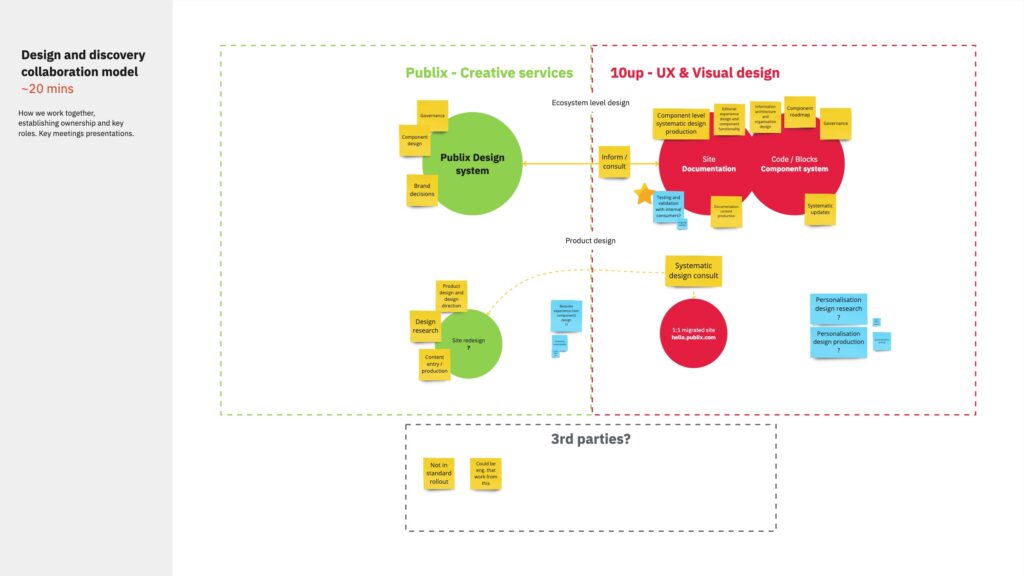
Define a product-level scope
I partnered with the visual designer to audit existing microsites and document every recurring pattern. From that, I wrote a component-level scope organised into phase one, phase two, and future, each with purpose, data/integration needs, and functional rules. We even addressed multi-logo headers and delivery CTAs up front so marketing use-cases wouldn’t derail builds later.
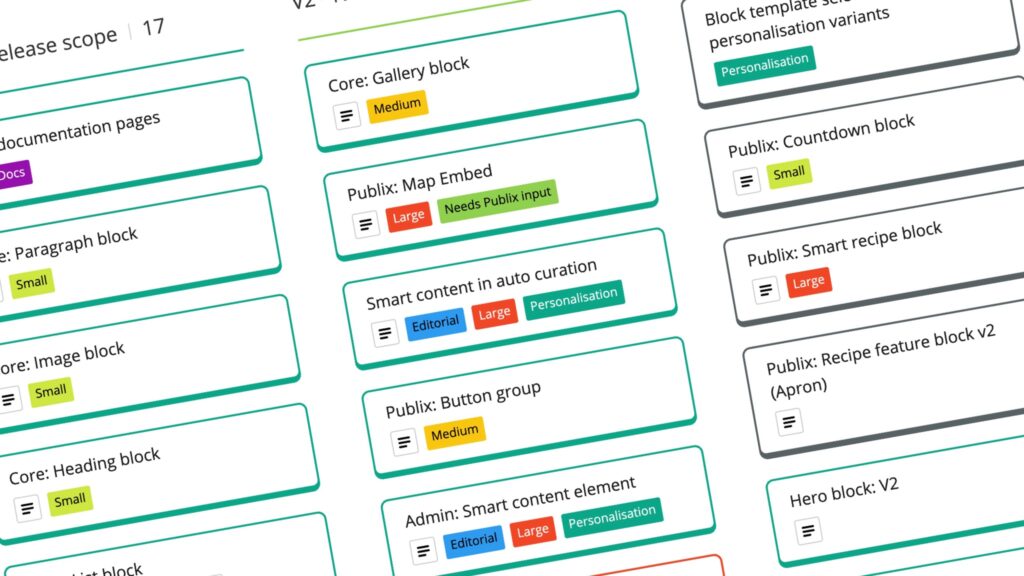
De-risk production with component mapping
During production I focused on the complex pieces, interconnected variants and CMS editorial flows and creating wireframes or component maps so editors knew exactly how to use blocks (and what content rules applied). This freed the visual designer to optimise standard components and kept delivery moving.
Implementation & evolution
First launch: Club Publix
We validated the system with Club Publix, a smaller site that still exercised multiple blocks. It proved the approach: reuse, recombine, and ship fast—without sacrificing brand fidelity.
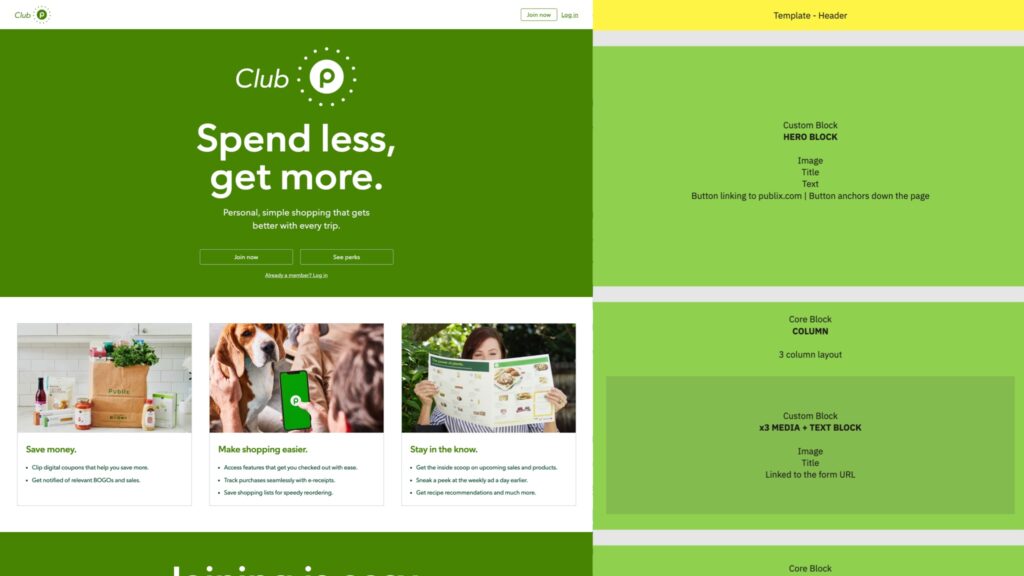
Scaling the library
As new microsites rolled out, I worked with Publix’s team to extend the system where it mattered most—adding recipe features, marketing messaging variants, and a sports team picker—all within the same governance and documentation framework.
Documentation & enablement
To ensure consistency (and reduce bottlenecks), I led documentation in Storybook: a full inventory of components and variants, plus usage guidance—purpose, anatomy, content requirements (e.g., character counts), and best practices. This empowered marketing and content teams to create confidently and stay on-brand without heavy design lift each time.
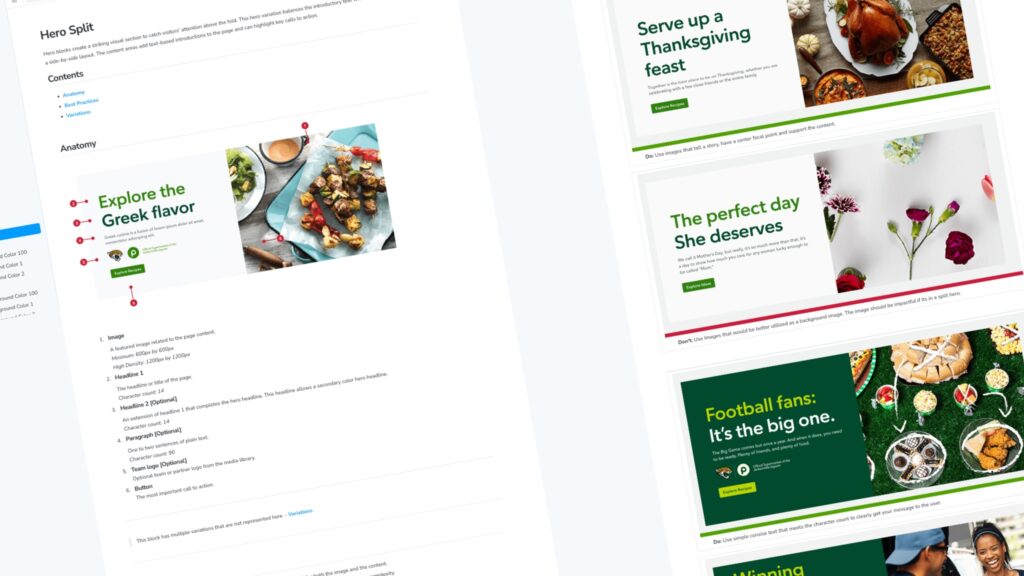
Outcomes
Over the course of the project we established a single, shared way of working across both the Publix and Fueled design teams. By clarifying roles, reviews, and decision points, we were able to reduce friction and keep delivery moving at pace. The component system itself proved to be highly scalable, adapting to new campaigns and content types without the need to redesign from scratch. Just as importantly, I drove the creation of living documentation in Storybook that empowered marketing and content teams to build independently while still maintaining quality and consistency across every microsite launch.
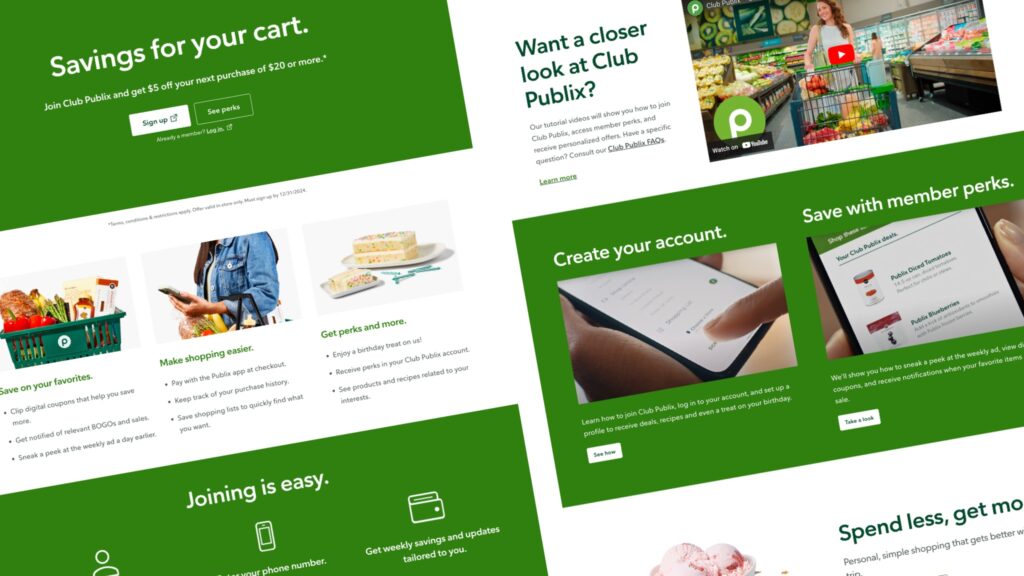
What I learned
Scaling isn’t just a design problem it’s an alignment problem. Invest early in shared ways of working, write a product-level scope, and back it with clear documentation. Do those three things well and the system (and the partnership) compounds over time.
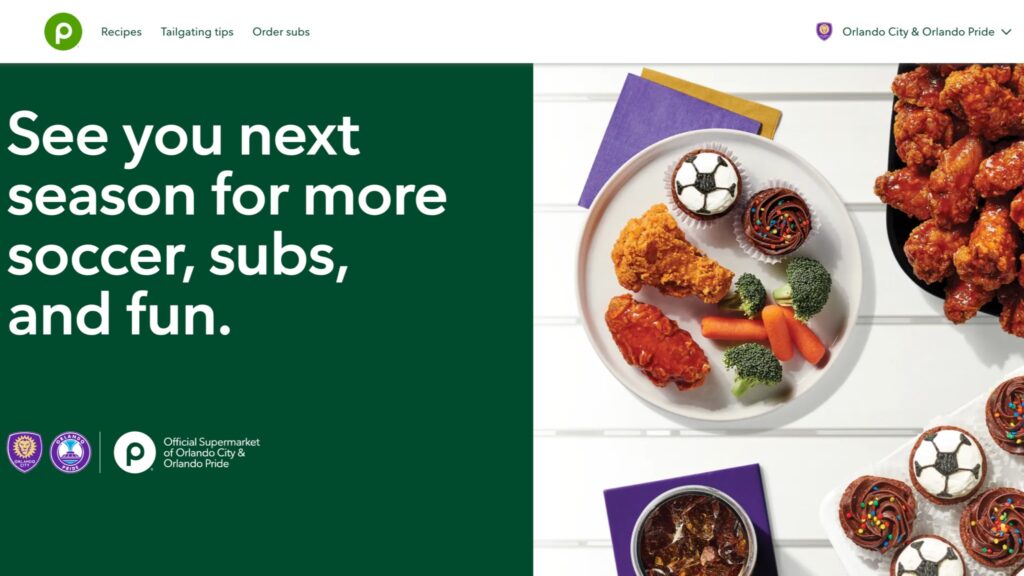
Live link
The component system was used over a number of currently live sites, some of the more note worthy examples are (locked to the US territories):